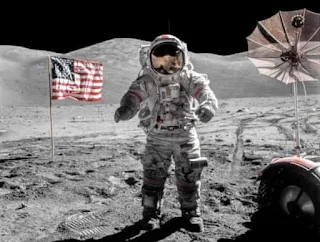NASA's Artemis program: Going back to the moon
In May of 2017, NASA announced its Artemis program - a plan to send humans back to the moon by 2024. The program is named after the Greek goddess of the moon, and it's an ambitious undertaking. Here's what we know about the program so far.
 |
| screengrab |
What is the Artemis program?
The Artemis program is a human spaceflight program that was announced by NASA in May of 2017. The program is named after the Greek goddess Artemis, who is the twin sister of Apollo and the goddess of the moon. The program's goal is to land humans on the moon by 2024, and to establish a sustainable presence on the lunar surface by 2028. The program will use existing hardware and technologies, as well as new ones that are being developed specifically for this purpose.
 |
| NASA/screengrab |
The first step of the Artemis program will be to launch an unmanned spacecraft to orbit the moon. This spacecraft will then serve as a relay station for communications between Earth and the lunar surface. The next step will be to land two astronauts on the moon's surface, using either an Apollo-style lander or a new landing system that is currently under development. These astronauts will perform scientific experiments and collect data about the lunar environment. They will also deploy a small rover that will explore the lunar surface and collect additional data.
Watch:
The data collected by the Artemis mission will be used to plan future missions to Mars and other destinations in our solar system. The long-term goal of the Artemis program is to create a sustainable human presence on the moon, which would serve as a stepping stone for further exploration of our solar system.
Why is NASA going back to the moon?
As part of NASA's Artemis program, the agency is planning to send humans back to the moon in 2024. There are a number of reasons why NASA is undertaking this mission.
 |
| screengrab |
First, the moon is an excellent place to test technologies and techniques that will be needed for future missions to Mars and other destinations. By going back to the moon, NASA can perfect its plans for long-duration space travel.
Second, the moon contains valuable resources that could be used to help support a human presence in space. For example, there are large deposits of water ice on the lunar surface that could be used for drinking water and making rocket fuel.
 |
Third, a return to the moon would allow us to better understand our place in the solar system and the universe beyond. A permanent human presence on the moon would allow us to conduct extensive scientific studies that could not be conducted from Earth.
Fourth, going back to the moon would inspire a new generation of explorers and scientists. The Artemis program represents an ambitious goal for NASA, and achieving it would show what is possible when we set our sights high.
The reasons listed above are just a few of the many reasons why NASA is planning to send humans back to the moon as part of the Artemis program. This mission represents a significant step forward for humanity's exploration of space, and it will have far-reaching consequences for our future in the cosmos
What are the goals of the Artemis program?
The Artemis program is NASA's plan to return humans to the moon by 2024. The goals of the program are to establish a sustainable human presence on the moon, conduct scientific research, and develop new technologies that will enable humans to explore deeper into the solar system.
 |
| NASA |
In order to achieve these goals, NASA is working on developing a new spacecraft called Orion that will be used to transport astronauts to and from the moon. The agency is also building a new launch system called Space Launch System (SLS) that will be powerful enough to send Orion and other large payloads into deep space. Lastly, NASA is constructing a Gateway orbiting outpost near the moon that will serve as a staging ground for missions to and from the lunar surface.
How will the Artemis program get astronauts to the moon?
The Artemis program is designed to get astronauts back to the moon within the next five years. The program will use a variety of methods to get astronauts to the moon, including the use of commercial partners, such as SpaceX and Blue Origin. The program will also utilize the Space Launch System (SLS) and Orion spacecraft to get astronauts to the moon.
What challenges does the Artemis program face?
The Artemis program faces a number of challenges, including technical challenges, financial challenges, and political challenges.
Technical challenges include the need to develop new technologies for landing on and operating on the moon, as well as the need to miniaturize and lighten scientific instruments so that they can be carried by the small lunar landers. Financial challenges include the need to secure funding from Congress and other sources, as well as the need to find private partners to help defray the costs of the program. Political challenges include obtaining international support for the program and dealing with skepticism from some members of Congress.
 |
Jack Schmitt on the moon in 1972. Photograph: NASA JSC ASU Andy Saunders |
The Artemis program is an exciting step for NASA and humanity as a whole. It represents our continued exploration of the solar system and our desire to better understand our place in the universe. With the help of private sector partners, we are confident that we can achieve these goals and create a sustainable presence on the moon. We look forward to continued progress in this endeavour and hope that you will join us on this journey.


0 Comments